Bivariate Gaussian Mixture Models
Mixture Models in R

Victor Medina
Researcher at The University of Edinburgh
Gender data
One variable
gender %>%
select(Weight) %>%
head()
Weight
1 241.8936
2 162.3105
3 212.7409
4 220.0425
5 206.3498
6 152.2122
Two variables
gender %>%
select(Weight, BMI) %>%
head()
Weight BMI
1 241.8936 31.18576
2 162.3105 24.12104
3 212.7409 27.23291
4 220.0425 30.06706
5 206.3498 29.70803
6 152.2122 23.66049
One variable
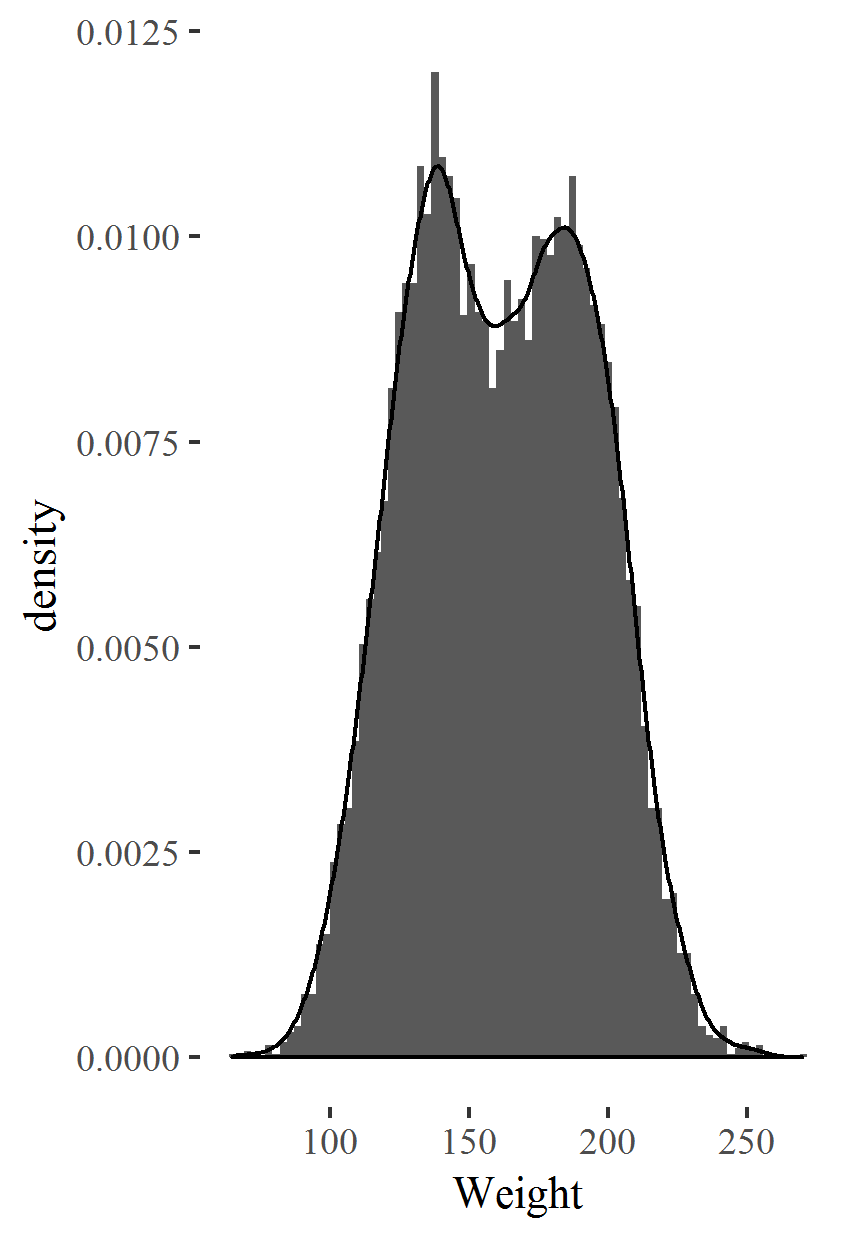
Two variables
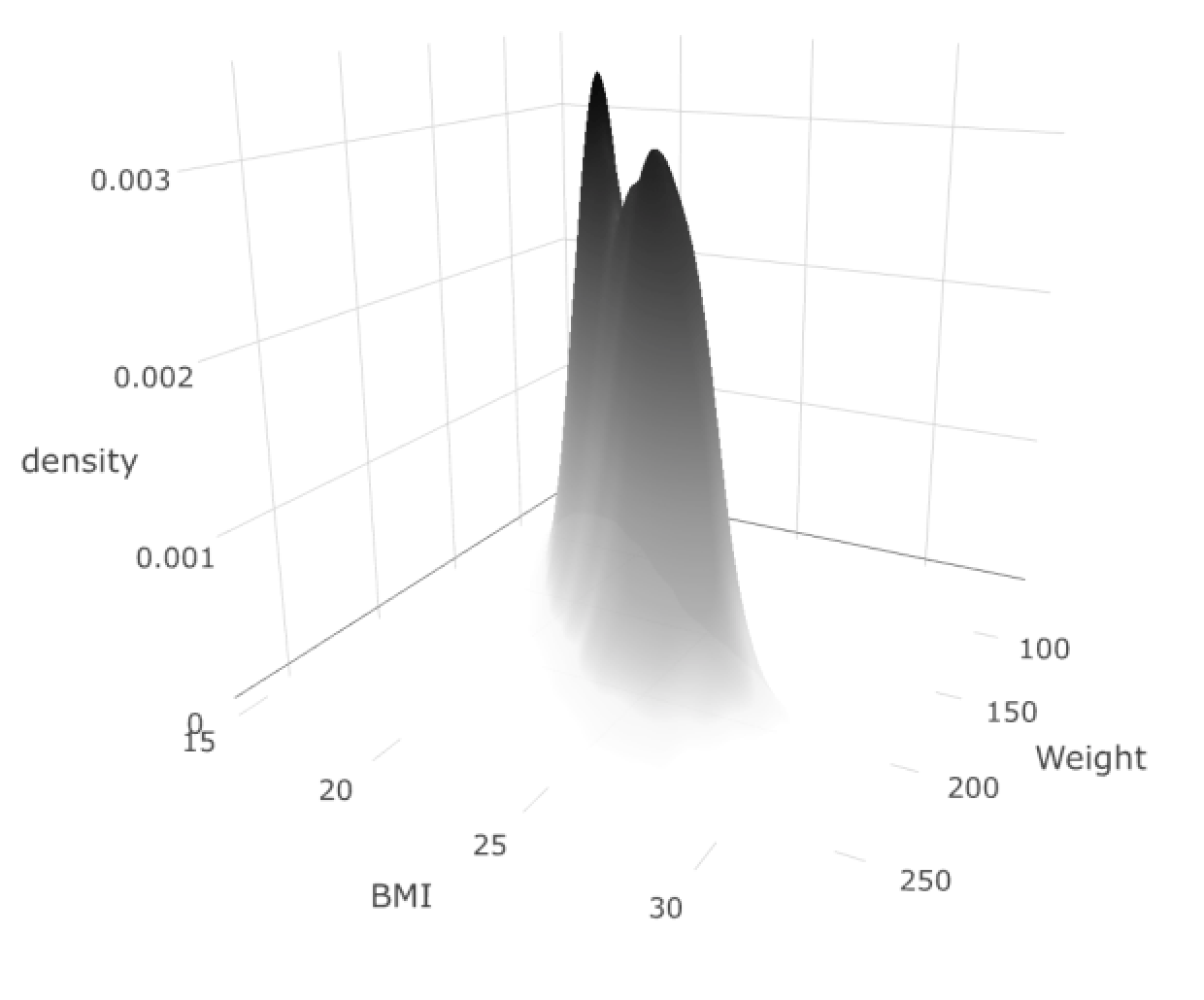
Modeling with mixture models
- Which is the suitable probability distribution?
- Bivariate Gaussian distribution
- How many sub-populations should we consider?
- Two clusters
- Which are the parameters and their estimations?
- The means (now in 2 dimension), the "standard deviation" (now a matrix) and the proportions
flexmixfor the estimations
Bivariate Gaussian distribution
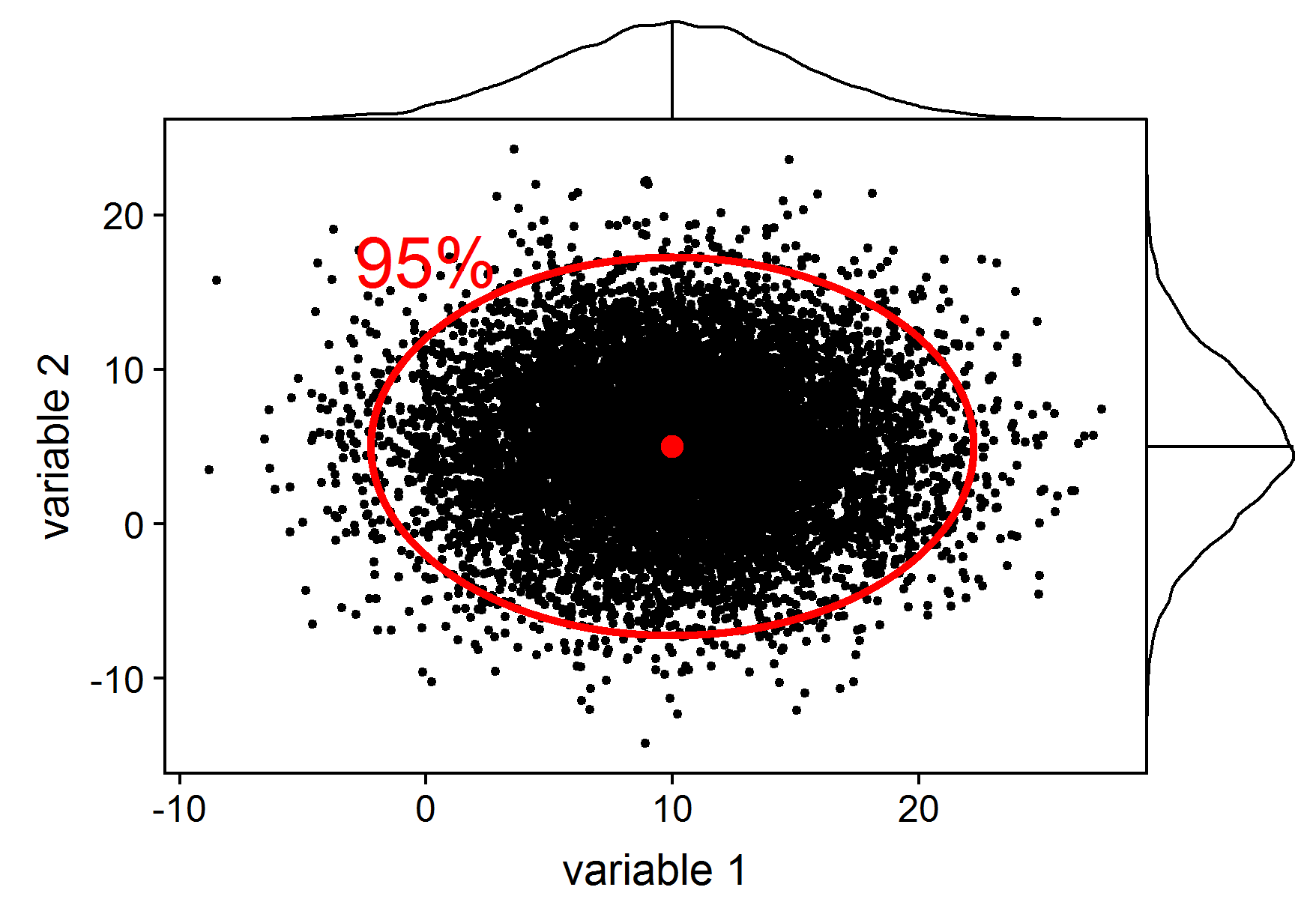
mean
10 5
covariance_matrix
[,1] [,2]
[1,] 25 0
[2,] 0 25
Bivariate Gaussian distribution
mean
10 5
covariance_matrix
[,1] [,2]
[1,] 25 20
[2,] 20 25
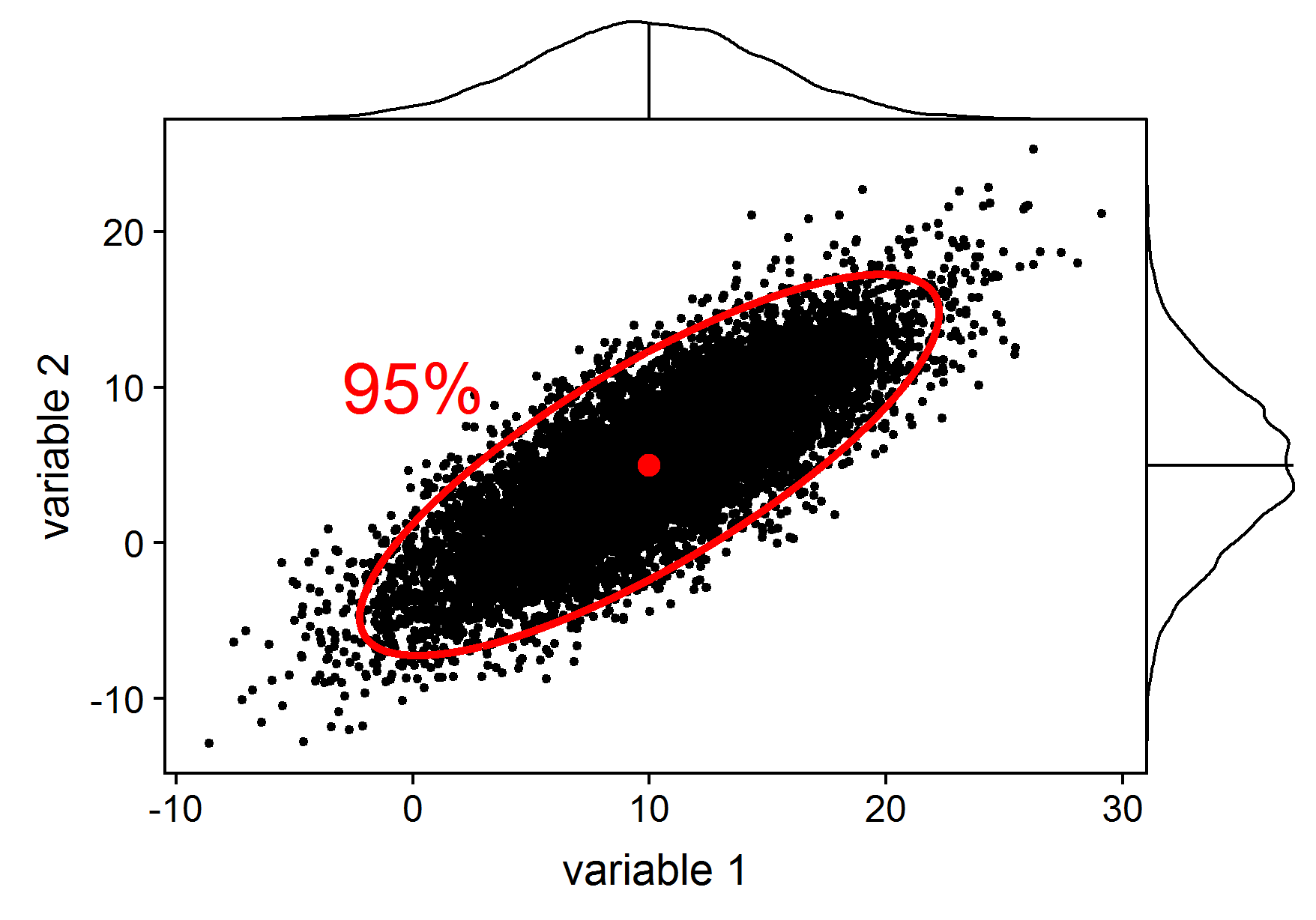
Coming back to the Gender data
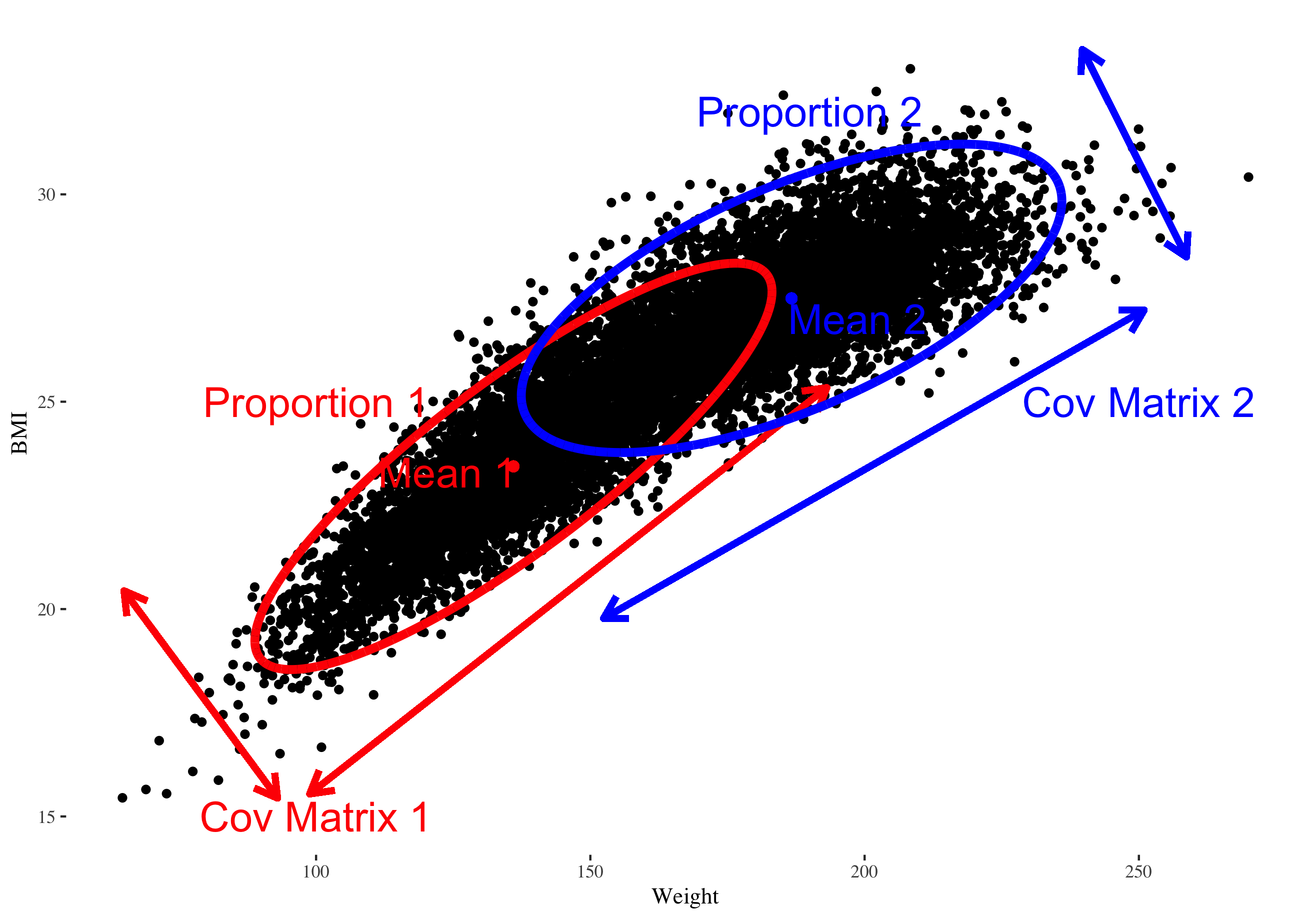
- Which distribution?
- Bivariate Gaussian distribution
- How many clusters?
- Two
- Which parameters?
- The proportions
- The means
- The covariance matrices
Let's practice!
Mixture Models in R

